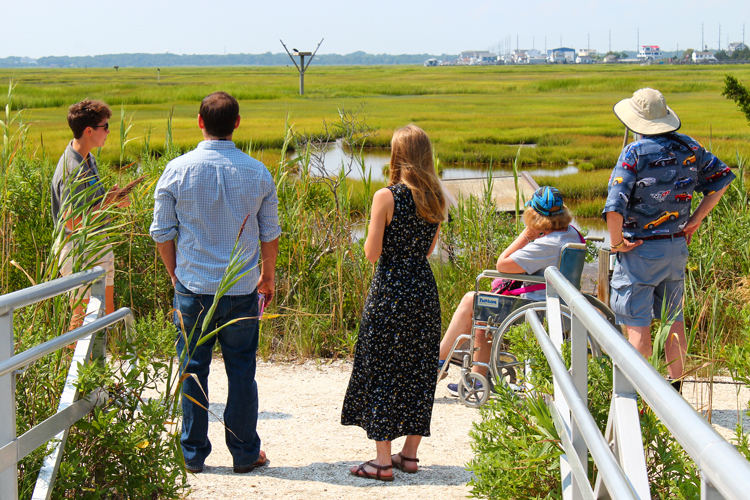by Dr. Lenore Tedesco, Executive Director
It’s in our nature to steward our fragile coastal ecosystems. It’s in our nature to conduct applied research to understand how these marshes are changing and how the wildlife that depend on them are impacted, and to use that research to inform conservation. It’s in our nature to educate people of all ages of their importance, and to connect them to the splendor of these ecosystems for everyone’s well-being. It’s in our nature to preserve, protect, and restore – and to inspire others to do the same.
More than 50 years ago, the World Wildlife Fund made south Jersey marshes a bastion of the fledgling conservation movement and protected them for the future. They founded The Wetlands Institute and built a research and education center here, so that people could experience the often inaccessible marsh. At the time, threats to wetlands came largely from coastal development. Losses were dramatic, and setting aside land through conservation was a highly effective strategy. Today, the most serious threats come from rapidly rising seas. They are more complex and affect marshes and coastal ecosystems regardless of their protection status. The effects ripple throughout the interconnected web, involving the systems themselves and all of the plants and animals within them. Solutions are much harder to come by. Letting nature run its course – the do nothing strategy – is no longer viable because doing nothing is causing harm.
Coastal flooding, marsh loss, and beach erosion are now everyday terms in our vernacular. The most widely employed response has been to harden our coastal defenses. Proposed solutions include building seawalls, raising bulkheads, and planning storm surge barriers that will close off the connections at major tidal inlets. Each of these dramatically interrupt the ebb and flow of the natural systems, and disconnect us from the nature that we so love and depend on for both physical and mental health.
The unintended consequences to the ecosystems are significant. A small change in the tidal flow through an inlet caused by a surge barrier can dramatically and negatively impact a marsh’s ability to build vertically to maintain its health. Seawalls and bulkheads block nesting areas for many species, notably diamondback terrapins. Juvenile fish, crabs, and birds rely on shallow mudflats and marshy edges that are absent along bulkheads.
It is against this backdrop that the Seven Mile Island Innovation Lab (SMIIL) was created. This partnership with the US Army Corp of Engineers and State of New Jersey is working to find ways to engineer with nature to reduce coastal flood risk, enhance marsh resilience, and restore vanishing habitats. We are implementing projects using clean dredged sediment; these have been working and have the potential to provide effective alternatives to coastal hardening. A next key focus of SMIIL will be to turn our attention to building resilience for TWI in innovative ways that preserve our connection to nature.
The Wetlands Institute opened its doors over 50 years ago. Over the past half-century, much has changed. What has remained consistent is our commitment to each facet of our mission – research, conservation, and education – and to maintaining the links between them. We are a distinctive organization because of this interconnectedness. It’s in our nature to connect people to the world around them, and this will always be at the heart of who we are.

